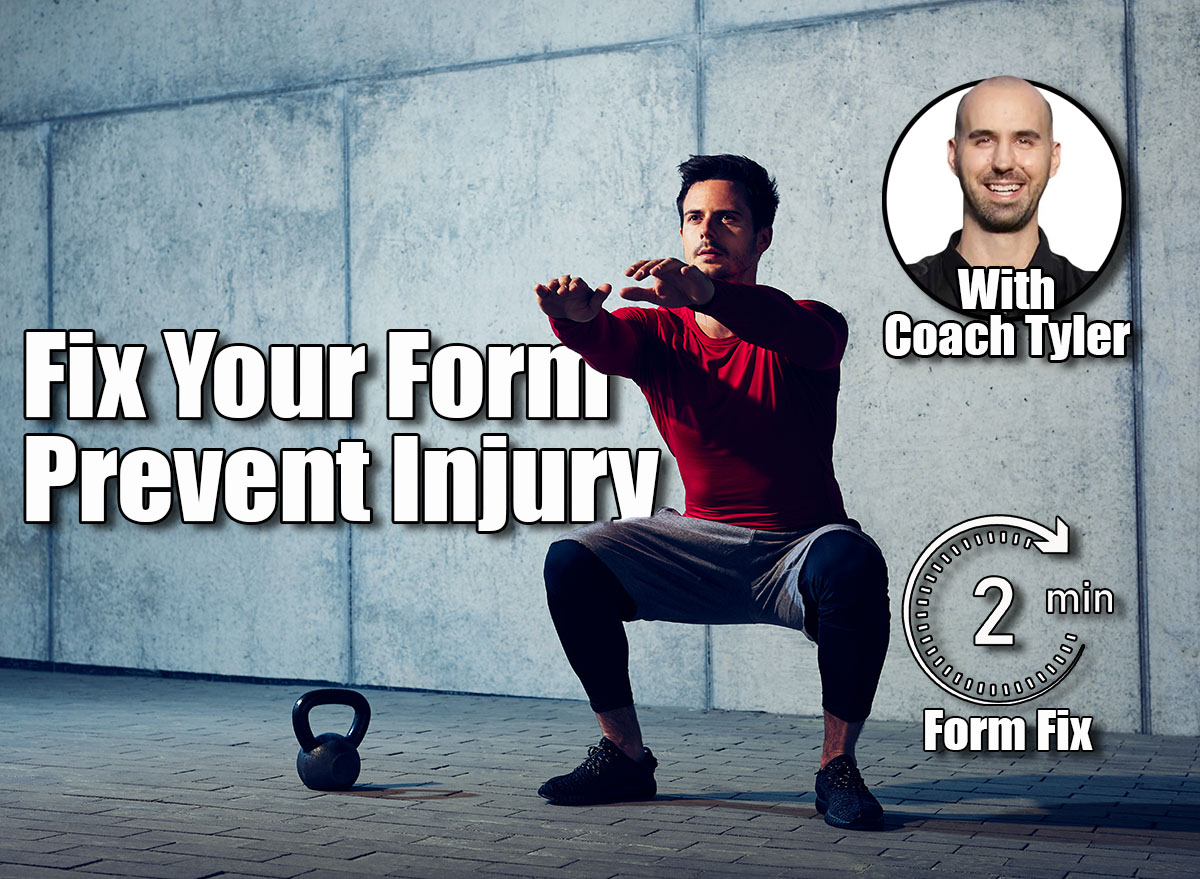Strength doesn’t just come from reps or weight, it’s built on proper form. Technique keeps your joints aligned, muscles firing in the right order, and your body safe through every movement. Being a personal trainer, I’ve seen firsthand how even minor misalignments turn into chronic pain or sidelining injuries. But the opposite holds true too: dialed-in form creates bulletproof strength, confidence, and freedom to train without fear.
These four checks teach your body to move how it was built to move. Each one locks in muscle activation, protects your spine and joints, and brings awareness to every rep. Mastering them sharpens your mind-body connection and unlocks your full power: no guesswork, no wasted effort. Once they become second nature, you’ll lift, squat, and hinge with clean, controlled strength for life.
Build these into your warmup, cooldown, or daily routine. They reinforce good habits, prevent breakdowns, and make every other move you do more effective.
4 Form Checks to Prevent Injury After 40
Neutral Spine in a Hinge
This form check teaches you how to move through your hips, not your back. It’s essential for deadlifts, squats, lunges, and even picking things up off the floor. A true hip hinge fires the glutes and hamstrings while keeping your spine stable and protected. If you nail this, you’re showing your body knows how to lift without strain, and that’s a foundation of real strength.
How to do it:
- Stand with feet hip-width apart, soft knees.
- Place a broomstick or dowel along your back, touching your head, upper back, and tailbone.
- Hinge at your hips, keeping all three contact points in place.
- Stop when your torso is nearly parallel to the floor, then return to standing.
Knee Over Midfoot in a Lunge


Where your knee tracks tells a full story about control, balance, and joint safety. Letting your knee cave inward adds strain to the ankle, hip, and even the low back. Keeping it aligned over your midfoot builds a strong base and fires the right muscles through the full range. Holding that position shows your hips and glutes control the motion, not momentum.
How to do it:
- Step into a lunge and pause at the bottom.
- Look down, your front knee should stack directly over your ankle and line up with your middle toes.
- Keep your chest tall and core braced.
- Hold for a few seconds, then return to standing.
Shoulder Pack in a Pushup


This check reinforces how to lock your shoulders into a stable, protective position. Shrugged or flared shoulders shift pressure to the neck and rotator cuffs. Packed shoulders engage your lats and keep the joint centered, giving you real pushing strength. Holding this shows upper-body control and the ability to protect your joints under load.
How to do it:
- Get into a high plank position.
- Press the floor away, spreading your shoulder blades.
- Slightly pull them down and back to “pack” them, think about tucking them into your back pockets.
- Lower into a pushup while keeping that packed position.
Core Brace in a Squat


A solid core brace turns your entire trunk into a stabilizing force. Letting your belly hang loose shifts pressure into your spine and reduces force output. Bracing locks your ribs and pelvis in alignment and lets your legs drive with full power. Holding it through a full squat proves your core drives movement, not just your legs.
How to do it:
- Stand tall, take a deep breath into your belly.
- Imagine tightening a wide belt around your waist.
- Keep that pressure as you squat down, resisting any collapse in your spine.
- Maintain the brace through the full range, then return to standing.















Leave a Reply